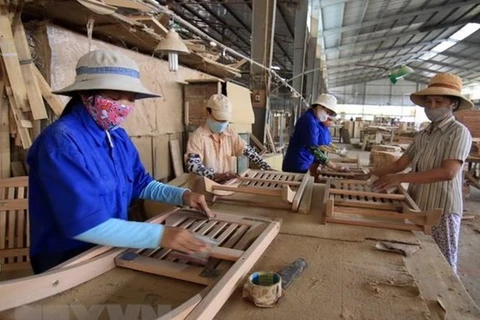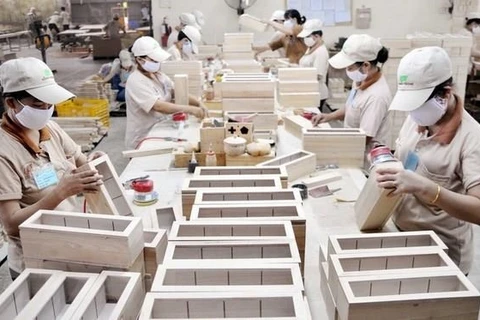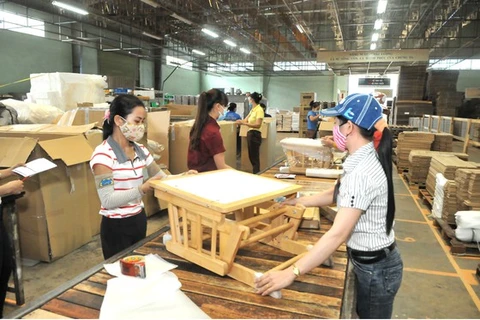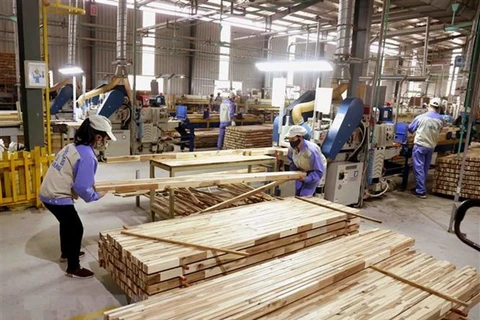Hanoi (VNA) – Despite the COVID-19 pandemic’s impact, the wood industry still enjoyed 3.2 billion USD in exports in the first four months of 2019, up 6 percent year on year, thanks to businesses’ efforts to switch to online trading and find new markets.
During the period, about 7 percent of members of the Handicraft and Wood Industry Association of Ho Chi Minh City (HAWA) had to halt operation while 51 percent cut output. About 45 percent of their employees were also laid off temporarily.
However, HAWA members still earned more than 1 billion USD from timber and forestry product exports, rising by over 10 percent year on year. Of the value, over 698,000 USD was from wood product shipments, up 5.8 percent from a year earlier.
Data from the Binh Dinh Department of Industry and Trade also shows that wood firms in the province also recorded a year-on-year increase of 13 percent in exports to about 188 million USD in the four months.
Chairman of the Binh Dinh Forest Products Association Le Minh Thien attributed the growth to a sudden surge in the sales of wood chips to China. Meanwhile, the export value of wooden furniture was maintained as businesses had already manufactured products in 2019 and focused on exports right after the Lunar New Year holiday in late January.
Vietnam’s effective control of the COVID-19 outbreak amid production suspension by rivals in other ASEAN countries, the EU and the US has also helped local firms receive more orders.
Besides, Thien noted, businesses have also proactively sought new orders from the Australian, EU and US markets while importers and exporters, along with producers and distributors, have discussed mutual support measures with one another.
President of the Vietnam Timber and Forest Product Association (VIFOREST) Do Xuan Lap said he believes that the wood industry can still record nearly-double-digit growth in 2020, adding that controlling the pandemic will help turn the country into a magnet for global wood processors. Many Vietnamese enterprises are also actively restructuring their products to adapt to changes in the market.
The output may decline in the second quarter, but it’s normal since orders usually drop by 30 percent during summer, he said.
According to Thien, the wood industry still needs to improve the quality of seedlings, expand the certified forests that are specialised in timber production, and ensure legal supplies of input materials. It is also necessary to promote wood processing, connect manufacturers with firms in the support sector, develop production chains, help companies improve their competitiveness and raise market shares in key export destinations, and diversify products.
VIFOREST recently coordinated with associations, producers and processors in the industry to devise solutions to sustain production activities, including advertising and selling products on the internet and providing training in sales skills on big e-commerce platforms like Amazon and Alibaba./.
VNA

























